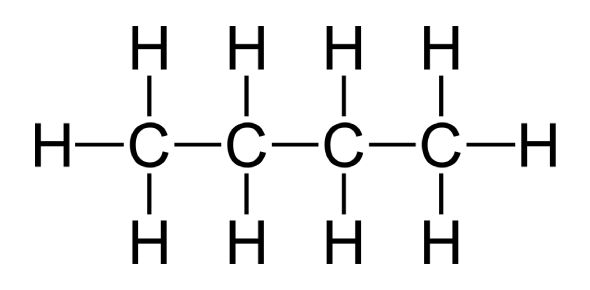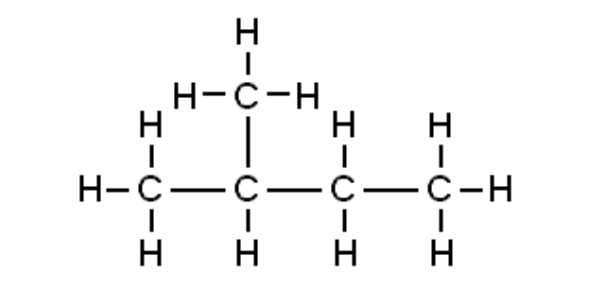Organic Chemistry: Nomenclature For Alkanes Quiz

Welcome to the ultimate Nomenclature for Alkanes Quiz! Are you ready to challenge your knowledge of organic chemistry and refine your understanding of alkane nomenclature? This quiz is designed to help students, educators, and chemistry enthusiasts sharpen their skills in identifying and naming alkanes accurately.
With a wide range of questions from basic to advanced, you'll have the opportunity to test your proficiency in naming alkanes with varying chain lengths and structural complexities.
Whether you're studying for an exam, brushing up on organic chemistry, or simply looking to test your skills, this quiz is perfect for you. Each question provides Read moreimmediate feedback and explanations to enhance your learning experience. Challenge yourself and see how well you can identify and name alkanes accurately. Take the Nomenclature for Alkanes Quiz now and become an alkane nomenclature expert!
Nomenclature for Alkanes Questions and Answers
- 1.
CH4
Explanation
Methane is the simplest alkane and a key component of natural gas, used widely as a fuel and chemical feedstock. It's a colorless, flammable gas with a tetrahedral structure. Combustion produces carbon dioxide and water, while halogenation yields various chlorinated compounds. Though crucial in energy production and chemical manufacturing, methane is a potent greenhouse gas with a significant impact on global warming.Rate this question:
- 2.Explanation
Ethane (C2H6) is a saturated hydrocarbon consisting of two carbon atoms bonded by a single sigma bond and six hydrogen atoms arranged in a tetrahedral geometry. It is a colorless, flammable gas with a boiling point of -88.6°C and a melting point of -182.8°C.Rate this question:
- 3.Explanation
Propane (C3H8) is a saturated hydrocarbon with three carbon atoms bonded by single sigma bonds and eight hydrogen atoms arranged in a tetrahedral geometry. It is a colorless, flammable gas with a boiling point of -42°C and a melting point of -187.7°C, and is commonly used as a fuel in heating, cooking, and as a chemical feedstock.Rate this question:
- 4.Explanation
Butane (C4H10) is a saturated hydrocarbon with four carbon atoms and ten hydrogen atoms. It exists as two structural isomers: n-butane, with a linear carbon chain, and isobutane, with a branched structure. Both isomers are colorless, flammable gases at room temperature. Butane has a boiling point of -0.5°C (n-butane) and -11.7°C (isobutane), and it is commonly used as a fuel and in the production of synthetic rubber.Rate this question:
- 5.Explanation
Isobutane (C4H10) is a branched alkane and an isomer of butane, featuring a central carbon atom bonded to three methyl groups and one hydrogen in a tetrahedral geometry. This structure gives it a boiling point of -11.7°C and a melting point of -159.6°C, making it a colorless, flammable gas at room temperature.Rate this question:
- 6.Explanation
Pentane(C5H12) is a saturated hydrocarbon with a straight-chain structure consisting of five carbon atoms and twelve hydrogen atoms, arranged in a tetrahedral geometry around each carbon. It is a colorless, flammable liquid with a boiling point of 36.1°C and a melting point of -129.8°C, and it is used as a solvent and in gasoline blending.Rate this question:
- 7.Explanation
Isopentane (C5H12) is a branched alkane with a carbon backbone consisting of a central butane chain and a methyl group attached to the second carbon atom, giving it a molecular structure of 2-methylbutane. This structure results in a colorless, flammable liquid with a boiling point of 27.8°C and a melting point of -159.9°C. It is used primarily as a blowing agent and in various chemical processes.Rate this question:
- 8.Explanation
Neopentane (C5H12) is a branched alkane featuring a central carbon atom bonded to four methyl groups, giving it a tetrahedral, highly symmetrical structure. This symmetry results in a low boiling point of 9.5°C and a melting point of -16.6°C, making it a colorless, volatile, and flammable liquid at room temperature.Rate this question:
- 9.
C6H14
Explanation
Hexane is a hydrocarbon compound with the chemical formula C6H14. It belongs to the alkane group and is composed of six carbon atoms and fourteen hydrogen atoms. Hexane is a colorless liquid with a strong odor and is commonly used as a solvent in various industrial processes. It is also found naturally in petroleum and is used as a fuel component. Therefore, the given answer "hexane" accurately represents the chemical formula C6H14.Rate this question:
- 10.
C7H16
Explanation
Heptane is a hydrocarbon with the molecular formula C7H16. It is an alkane with seven carbon atoms and sixteen hydrogen atoms. The name "heptane" is derived from the Greek word "hepta," meaning seven, indicating the seven carbon atoms in the molecule. It is a colorless, odorless liquid that is commonly used as a solvent in laboratories and as a fuel component.Rate this question:
- 11.
C8H18
Explanation
Octane is a chemical compound with the molecular formula C8H18. It is an alkane, which means it consists of only carbon and hydrogen atoms. Octane is a colorless liquid that is commonly used as a fuel in gasoline. It is known for its ability to resist knocking in internal combustion engines, making it ideal for use in automobiles. Octane is also used as a solvent and as a component in the production of various chemicals.Rate this question:
- 12.
C9H20
Explanation
The given chemical formula C9H20 corresponds to a hydrocarbon compound called nonane. Nonane is an alkane with nine carbon atoms and twenty hydrogen atoms. It is a colorless liquid with a strong odor and is commonly used as a solvent.Rate this question:
- 13.
C10H22
Explanation
The given chemical formula C10H22 represents a hydrocarbon compound with 10 carbon atoms and 22 hydrogen atoms, which is known as decane. Decane is an alkane and belongs to the family of straight-chain hydrocarbons. It is a colorless liquid with a strong odor, commonly used as a solvent and fuel.Rate this question:
Quiz Review Timeline +
Our quizzes are rigorously reviewed, monitored and continuously updated by our expert board to maintain accuracy, relevance, and timeliness.
-
Current Version
-
May 10, 2024Quiz Edited by
ProProfs Editorial Team
Expert Reviewed by
Zohra Sattar Waxali -
Oct 13, 2010Quiz Created by
KevRob




.webp)
.webp)


.webp)

